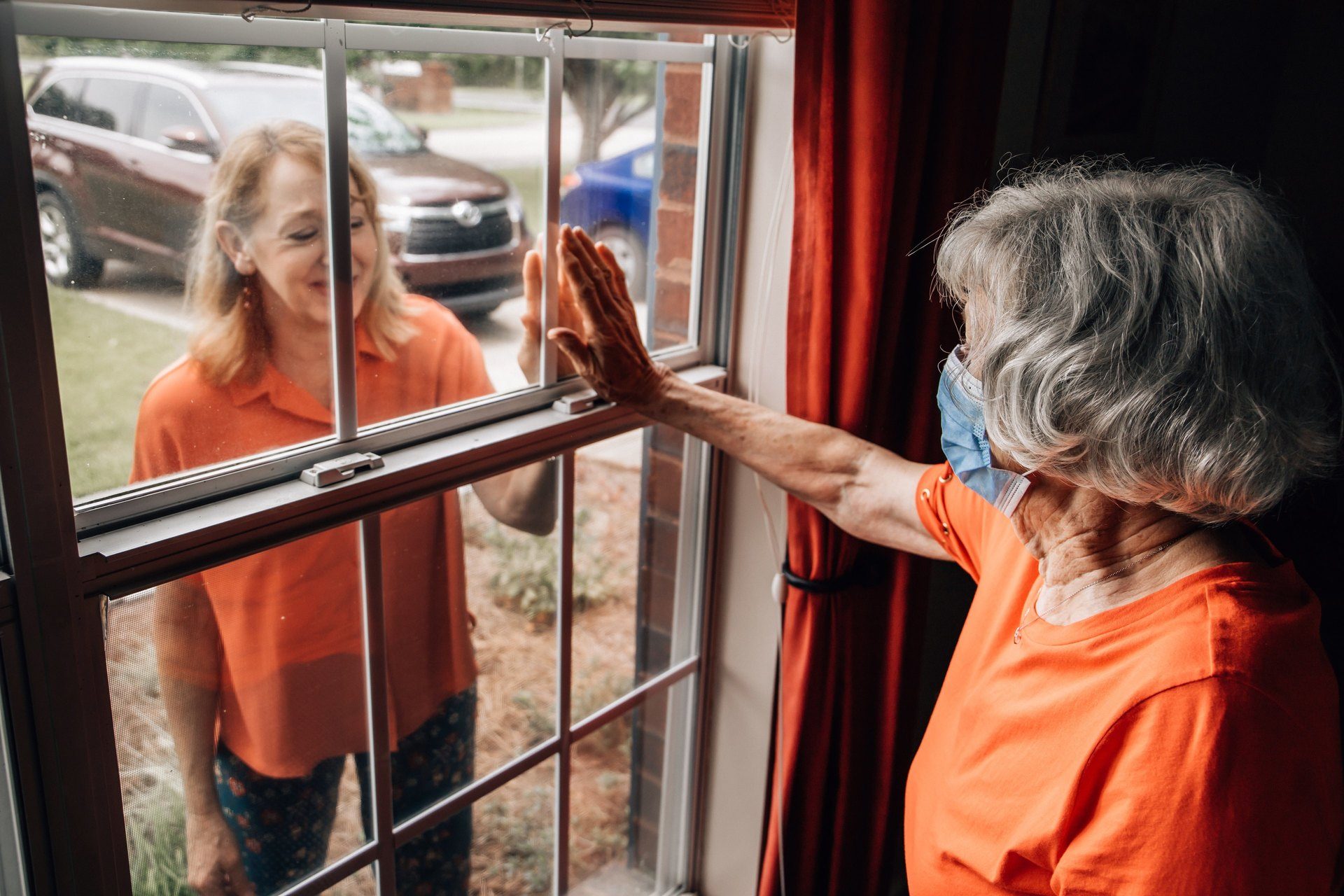
COVID separates family members when nursing homes close visitation
BGSU and University of Maryland social work researchers share families' perspectives
By Julie Carle
When nursing homes shut their doors in March 2020 to prevent the spread of the coronavirus, the residents’ family members were disconnected from their loved ones except for phone calls and window visits.
Their heartbreaking stories are part of the research a pair of social work researchers have undertaken in the midst of the pandemic.
Dr. Vivian Miller, assistant professor of social work and director of the Optimal Aging Institute in the College of Health and Human Services at Bowling Green State University; and Dr. Nancy Kusmaul, associate professor of social work at University of Maryland Baltimore County; have a history of working with nursing homes, looking at policies and quality of life and quality of care issues for people in nursing homes.
“When Medicaid and Medicare cut off visitation in nursing homes to keep COVID-19 from spreading, we thought it was going to be a couple of weeks, a month, and that seemed reasonable, but then it went on and on,” Kusmaul said. “As the restrictions continued through the summer and beyond, I noticed that nobody at the advocacy level was talking about it from the perspective of the family members.”
The gerontology-focused social work faculty members decided to use their experience “to talk with family members, to get their voices heard and to share their voices in academic spaces and to the rest of the world,” Kusmaul said.
Through an online form and handfuls of follow-up interviews, Miller and Kusmaul uncovered many stories, and most with a similar sentiment: Pandemic shutdowns have impacted nursing home residents as well as their families.
“A lot of the people participating were those who had been going every day into the nursing home, or multiple times a week before COVID,” Miller said. “This was a very traumatic change for them.”
One woman whose husband has early onset Alzheimer’s and is blind as a result of the disease, reported her daily visits were limited to phone calls and standing at his window. Sadly, the window visits for him were no different than the phone calls because of his blindness. However, his wife used the window visits to check on his status, to make sure he was getting adequate care getting bathed, eating or not, Miller said.
“She was certain that she would not see her husband again,” Miller said. “For her and many of the family caregivers, there was this grieving process because they had come to the conclusion that they would never see their loved ones again.”
Her story stood out to Miller, because the nursing home visits were part of her daily routine to stay connected to her husband. She basically lived there, and went home to sleep and take care of the house. She felt like she was part of the community at the nursing home. That changed overnight a year ago when COVID-19 became a pandemic.
“Just about everyone I interviewed, including this wife, shared they had seen an incredible decline of their loved ones since stopping visitation,” Miller said. “They couldn’t have that touch anymore, those relational experiences, which are so critical for these residents.”
Kusmaul and Miller shared some of the stories in a Valentine’s Day commentary published in the Baltimore Sun. They used the holiday that symbolizes love as a time to highlight how “suddenly and unexpectedly, policies intended to keep nursing home resident safe led to unimaginable consequences for the couples divided by the doors of a nursing home.”
It’s personal
For Miller and Kusmaul, the topic goes beyond academic research and is personal. Miller’s interest in working with vulnerable, at-risk older adults was due, at least in part, to a close relationship with a grandfather who was in a nursing home. Kusmaul’s earlier career was as a medical social worker, so she had first-hand experience navigating nursing home policies and procedures and their impact on the population she served.
They recruited participants via social media, email listserves and through connections they already had. People responded from across the country, including California, Texas, Illinois, Virginia and Massachusetts.
The overwhelming message was that they just wanted to be heard. They had a lot to say about their loved ones being in long-term care.
This survey “gave them the space to share,” Kusmaul said.
Many of the family caregivers also said when closing visitation continued beyond a month or two, that they would have done whatever it took to return to visits.
“When we asked whether they thought closing visitation kept their family members safer, many of them said, ‘I would have restricted everything to have been able to go into the nursing home,’” Kusmaul said. “It’s that essential caregiver piece. Nursing homes, when they are making decisions, need to respect that family members will do what they need to do to protect their loved ones.”
“I was so interested in sharing the stories in the media because oftentimes in higher education or academia, we’ll do the research and we’ll publish in journals to be read by other scholars or our students,” Miller said. “When Nancy had the idea to write the commentary, provided an entirely new audience where we could highlight the impact of this work and the importance of this work.”
The research can be used to inform policy and legislative changes and reform.
“Academically, there’s a lot of research on nursing homes; however, family members’ perspectives are pretty absent in the research,” Kusmaul said. “In all the spaces, making sure all the voices are heard is really important, especially moving forward; there are some opportunities to make some real changes. We want to make sure we are making those changes in ways that benefit everybody.”
Updated: 03/15/2025 01:43AM




